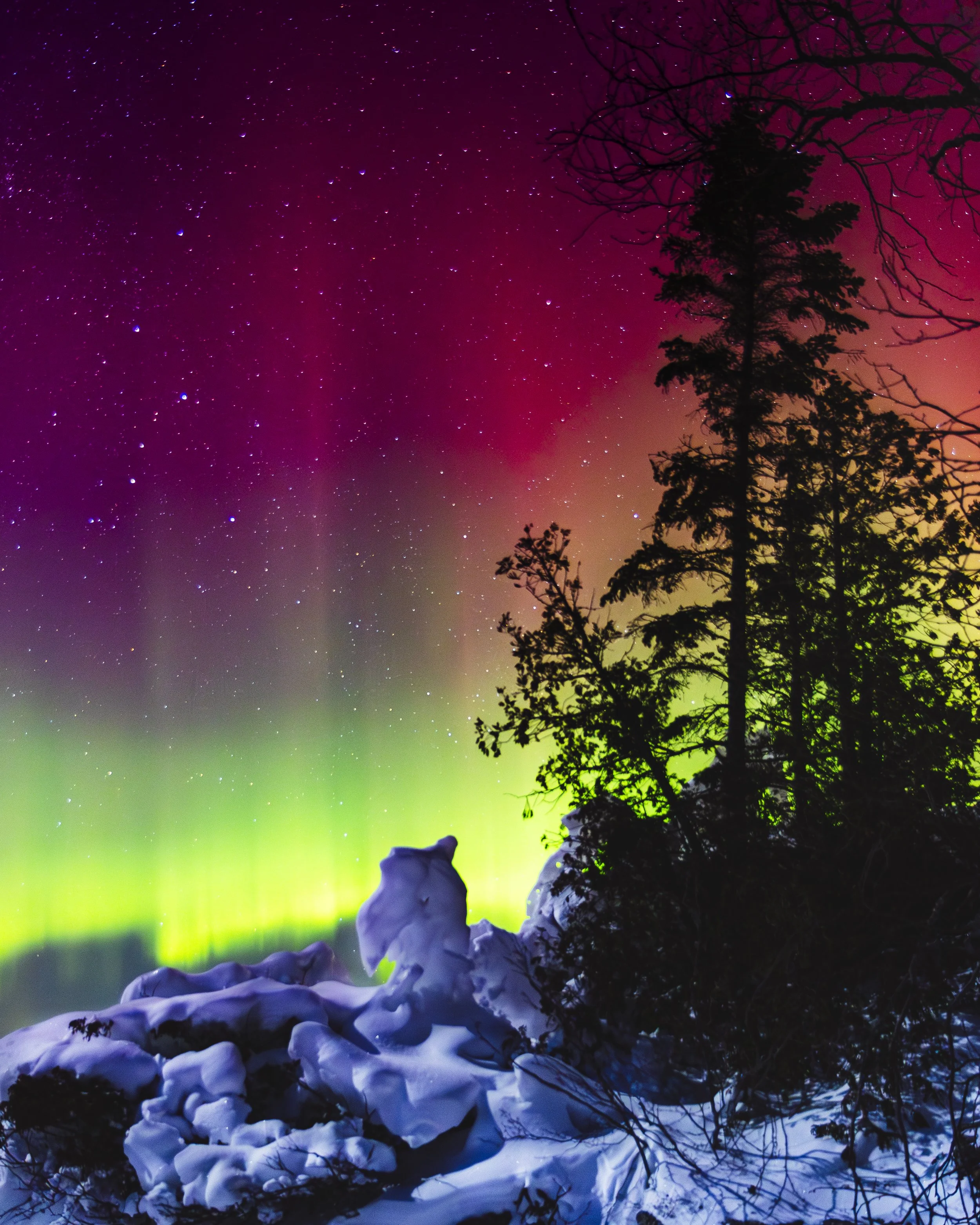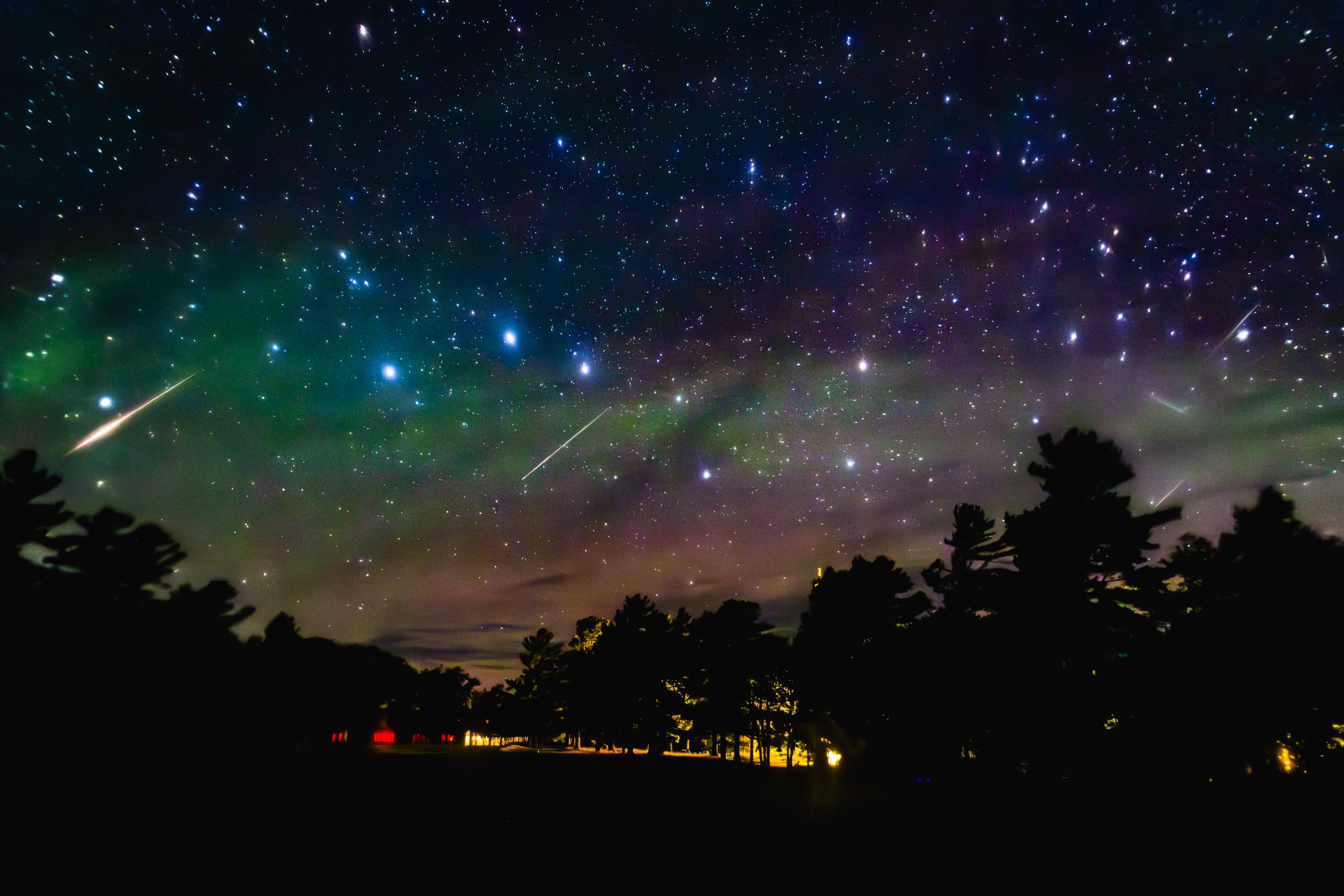Even in the deep freeze, the sky finds a way to burn bright.
If you’ve ever stood on a Keweenaw shoreline while the sky begins to ripple green and purplish-pink above Lake Superior, you know: it’s not something you’ll forget.
Whether you’re planning your first visit to the Upper Peninsula or returning with hopes of seeing the aurora again, timing matters. This guide will help you understand when and why the Northern Lights are most visible in the Keweenaw and how to stack the odds in your favor using local insights, natural patterns, and practical tools.
Why the Keweenaw Is an Aurora Hotspot
The Keweenaw Peninsula extends far into Lake Superior, giving it a unique combination of northern latitude and exceptionally dark skies. Locations like Copper Harbor, Calumet Waterworks, and Brockway Mountain Drive offer broad northern views, minimal light pollution, and a rugged beauty that makes every sighting feel like a gift.
Moon Phases: The Subtle Factor That Changes Everything
The best aurora displays often happen near the new moon. A dark sky makes the colors of the aurora more vivid and helps the Milky Way emerge behind it.
New Moon = Ideal for visibility
Full Moon = Can wash out faint auroras, but adds light to your landscape
Best Window = Four days before or after a new moon
Pro Tip: Mid-October sometimes brings the rare combination of early snowfall and lingering fall color. This can be a magical pairing, which might not be too visible under the aurora but lets you have stunning unique landscapes during the day and awe-filled skies at night.
Why the Equinoxes Bring Better Auroras
Did you know the spring and fall equinoxes are often the most aurora-active times of year?
That’s because Earth's tilt relative to the sun during these times makes it easier for solar wind to interact with our magnetic field, resulting in more frequent geomagnetic storms.
Watch for peak activity:
March 15–30
September 15–October 5
Equinox + New Moon = Prime Time
Plan trips around these windows for your best chance of success.
Aurora Forecast apps let you know when activity is peaking—even before it’s visible to the eye.
Tracking Solar Activity Without Becoming a Scientist
You don’t need to be an astronomer or physicist to monitor the aurora forecast. I recommend:
Weather Matters (Especially Around Lake Superior)
Even short clearing windows can reveal breathtaking skies—patience pays off.
The Keweenaw's weather is shaped by Lake Superior. Clouds can appear and disappear quickly, especially in fall.
The best skies often follow:
Cold fronts
Lake effect storms
High-pressure clearing
Tools I use to check weather:
Some of my best aurora photos were taken in brief 10-minute clearings just after a snow squall passed.
Quick Planning Chart
| Factor | Condition |
|---|---|
| Season | September–April (peaks in March, October) |
| Moon Phase | New moon ± 4 days |
| Kp Index | 5 or higher |
| Cloud Cover | 0-30%, ideally breaking post-front |
| Time | 9 PM - 2 AM (often peaks between 11PM and midnight) |
Local Insight: What I Tell My Clients
“Plan for a cold night, pack your layers, bring a thermos and prepare to stand in awe. The aurora is never guaranteed, but the experience of chasing it is always worth it.”
Ready to Experience the Keweenaw Night Sky?
If you’d like to increase your chances of seeing the Northern Lights (and come away with great photos) I offer guided night photography excursions tailored to the season, forecast, and your goals.
🔁 Links
“Top 5 Keweenaw Locations for Night Sky Photography” (placeholder until live)















